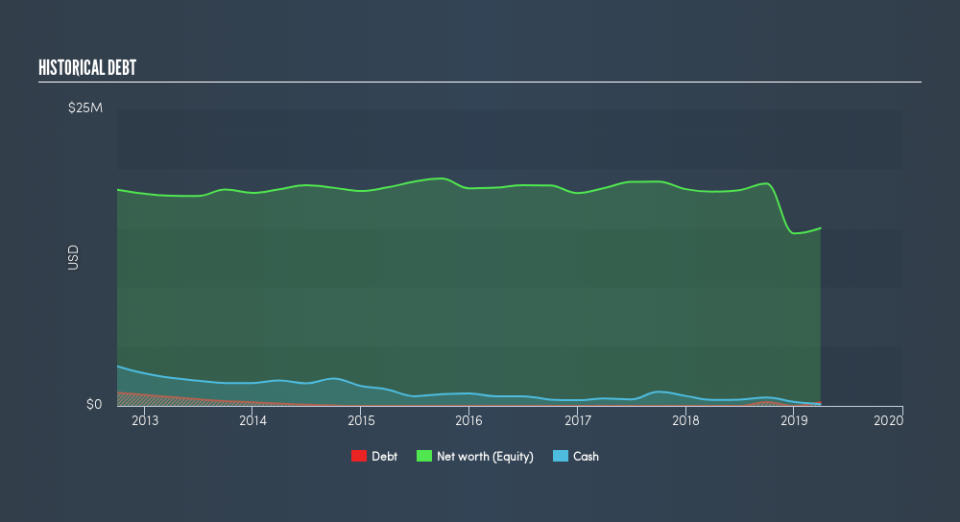Is Omni-Lite Industries Canada (CVE:OML) Using Too Much Debt?

Legendary fund manager Li Lu (who Charlie Munger backed) once said, 'The biggest investment risk is not the volatility of prices, but whether you will suffer a permanent loss of capital.' So it seems the smart money knows that debt - which is usually involved in bankruptcies - is a very important factor, when you assess how risky a company is. We note that Omni-Lite Industries Canada Inc. (CVE:OML) does have debt on its balance sheet. But is this debt a concern to shareholders?
When Is Debt Dangerous?
Debt and other liabilities become risky for a business when it cannot easily fulfill those obligations, either with free cash flow or by raising capital at an attractive price. If things get really bad, the lenders can take control of the business. However, a more common (but still painful) scenario is that it has to raise new equity capital at a low price, thus permanently diluting shareholders. Of course, debt can be an important tool in businesses, particularly capital heavy businesses. The first thing to do when considering how much debt a business uses is to look at its cash and debt together.
See our latest analysis for Omni-Lite Industries Canada
How Much Debt Does Omni-Lite Industries Canada Carry?
You can click the graphic below for the historical numbers, but it shows that as of March 2019 Omni-Lite Industries Canada had US$300.0k of debt, an increase on none, over one year. However, it does have US$148.3k in cash offsetting this, leading to net debt of about US$151.7k.
A Look At Omni-Lite Industries Canada's Liabilities
According to the last reported balance sheet, Omni-Lite Industries Canada had liabilities of US$1.45m due within 12 months, and liabilities of US$2.16m due beyond 12 months. On the other hand, it had cash of US$148.3k and US$1.60m worth of receivables due within a year. So its liabilities outweigh the sum of its cash and (near-term) receivables by US$1.86m.
While this might seem like a lot, it is not so bad since Omni-Lite Industries Canada has a market capitalization of US$9.06m, and so it could probably strengthen its balance sheet by raising capital if it needed to. But we definitely want to keep our eyes open to indications that its debt is bringing too much risk. The balance sheet is clearly the area to focus on when you are analysing debt. But you can't view debt in total isolation; since Omni-Lite Industries Canada will need earnings to service that debt. So when considering debt, it's definitely worth looking at the earnings trend. Click here for an interactive snapshot.
In the last year Omni-Lite Industries Canada managed to grow its revenue by 33%, to US$8.2m. Shareholders probably have their fingers crossed that it can grow its way to profits.
Caveat Emptor
Even though Omni-Lite Industries Canada managed to grow its top line quite deftly, the cold hard truth is that it is losing money on the EBIT line. To be specific the EBIT loss came in at US$325k. When we look at that and recall the liabilities on its balance sheet, relative to cash, it seems unwise to us for the company to have any debt. Quite frankly we think the balance sheet is far from match-fit, although it could be improved with time. However, it doesn't help that it burned through US$197k of cash over the last year. So suffice it to say we do consider the stock to be risky. For riskier companies like Omni-Lite Industries Canada I always like to keep an eye on whether insiders are buying or selling. So click here if you want to find out for yourself.
If, after all that, you're more interested in a fast growing company with a rock-solid balance sheet, then check out our list of net cash growth stocks without delay.
We aim to bring you long-term focused research analysis driven by fundamental data. Note that our analysis may not factor in the latest price-sensitive company announcements or qualitative material.
If you spot an error that warrants correction, please contact the editor at editorial-team@simplywallst.com. This article by Simply Wall St is general in nature. It does not constitute a recommendation to buy or sell any stock, and does not take account of your objectives, or your financial situation. Simply Wall St has no position in the stocks mentioned. Thank you for reading.

 Yahoo Finance
Yahoo Finance 
